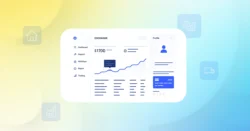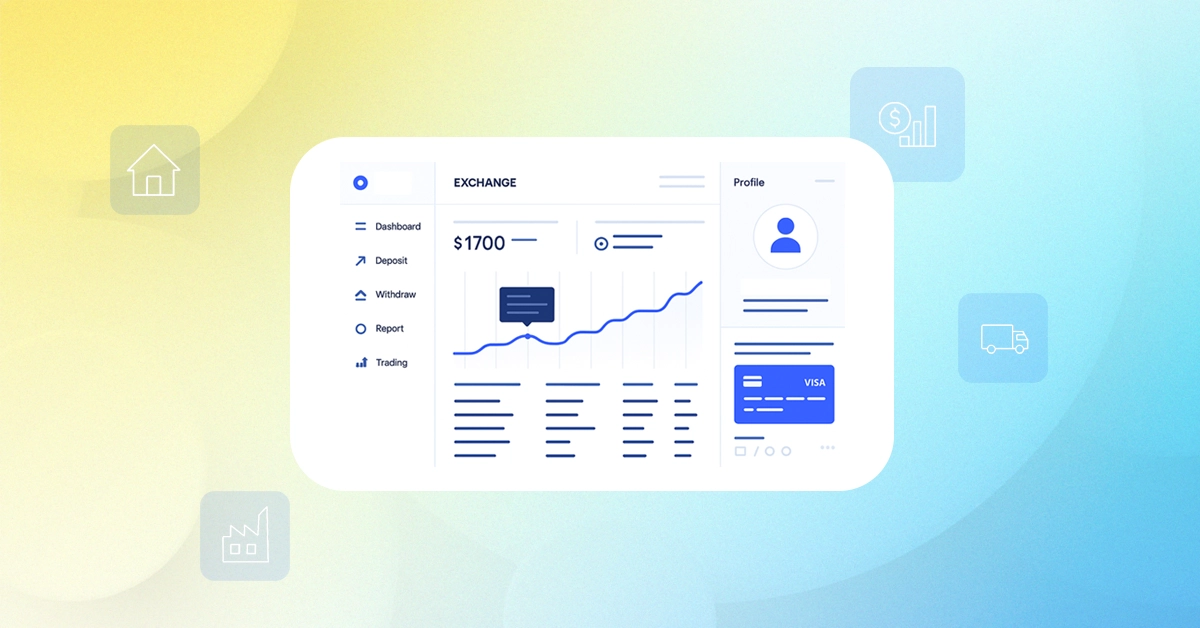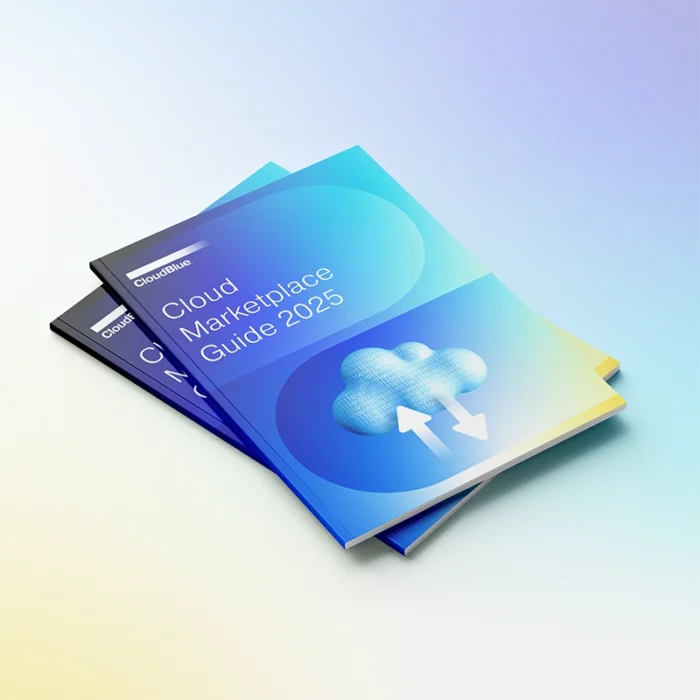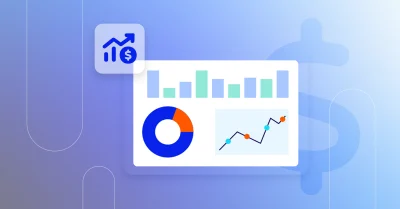What is Vertical SaaS?
Vertical SaaS refers to cloud-based software solutions designed specifically for particular industries or business sectors. Unlike their horizontal counterparts, vertical SaaS platforms cater to the unique workflows, compliance requirements, and operational challenges of specific industries. These specialized solutions offer industry-specific features, terminology, and processes that resonate with professionals within those fields.
What makes vertical SaaS distinctive is its deep domain expertise. Developers of these platforms typically have extensive knowledge of the industries they serve, enabling them to create solutions that address specific pain points and challenges.
For instance, a vertical SaaS platform for healthcare will incorporate features for patient management, medical billing compliance, and integration with electronic health record systems – functionalities that would be irrelevant for other sectors.
The vertical SaaS approach represents a significant shift from the traditional “build once, sell to many” model of software development. Instead, these niche software platforms are meticulously crafted to align with the unique operational realities of particular business verticals, making them more immediately valuable to users within those industries.
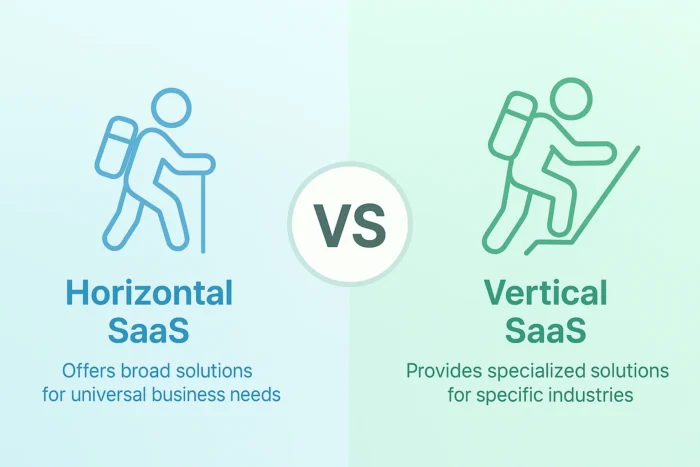
Horizontal vs. Vertical SaaS
To fully appreciate the vertical SaaS concept, it’s essential to contrast it with its horizontal counterpart:
Horizontal SaaS platforms offer solutions that can be utilized across multiple industries. These are typically function-based applications that address universal business needs such as customer relationship management, human resources, marketing automation, or accounting. Well-known examples include Salesforce, Slack, and Microsoft 365. Their strength lies in their versatility and broad applicability across different sectors.
Vertical SaaS, in contrast, narrows its focus to serve specific industries. These sector software solutions are built from the ground up with industry-specific workflows and compliance requirements in mind. They often include specialized terminology, reports, and features that would only make sense within their target vertical.
The key differences include:
Scope: Horizontal SaaS casts a wide net, serving multiple industries with general functionality. Vertical SaaS drills deep into one industry with specialized capabilities.
Market Size: Horizontal SaaS targets a broader potential customer base, while vertical SaaS focuses on a more defined but potentially underserved market segment.
Customization Needs: Horizontal solutions often require significant customization to fit specific industry requirements. Vertical SaaS, however, comes pre-configured with industry-specific features, reducing implementation time and complexity.
Domain Expertise: Vertical SaaS providers typically possess deep knowledge of their target industry, allowing them to anticipate needs and compliance requirements that horizontal providers might overlook.
Implementation Timeline: Since vertical solutions are pre-configured for specific industries, they generally offer faster deployment and time-to-value compared to horizontal platforms that might require extensive customization.
The Market’s Move Toward Specialization
Several compelling factors are accelerating the adoption of vertical SaaS solutions across industries:
Increasing Regulatory Complexity: Many industries face growing regulatory requirements that necessitate specialized software capabilities. Vertical SaaS providers build compliance features directly into their platforms, saving businesses from the complex task of configuring generic solutions to meet industry-specific regulations.
Demand for Faster Time-to-Value: Organizations increasingly prioritize rapid implementation and return on investment. Since vertical SaaS solutions are pre-configured for specific industry needs, they typically offer faster deployment and value realization compared to horizontal alternatives that require extensive customization.
Rising Customer Expectations: As B2B software users experience sophisticated consumer applications in their personal lives, they bring heightened expectations to their professional software. Vertical SaaS platforms, with their industry-specific functionality and intuitive interfaces, often better meet these elevated expectations.
Industry-Specific Integration Needs: Modern businesses rely on interconnected systems to operate efficiently. Vertical SaaS solutions typically offer pre-built integrations with other industry-specific tools and data sources, simplifying the creation of cohesive technology ecosystems.
Competitive Differentiation: As basic business functions become digitized across industries, companies seek new sources of competitive advantage. Vertical SaaS platforms enable organizations to optimize industry-specific operations in ways that generic solutions cannot match.
Data-Driven Decision Making: Specialized vertical platforms often include industry-specific analytics and benchmarking capabilities, allowing businesses to measure performance against relevant metrics and industry standards rather than generic business measures.
These drivers collectively create compelling incentives for businesses to adopt vertical SaaS solutions as part of their overall SaaS strategy, particularly for core functions that differentiate them within their industries.
Benefits & Challenges of Industry-Specific Solutions
The adoption of vertical SaaS solutions offers organizations significant advantages while also presenting certain limitations that must be carefully considered. Understanding both sides of this equation is essential for businesses evaluating specialized software options.
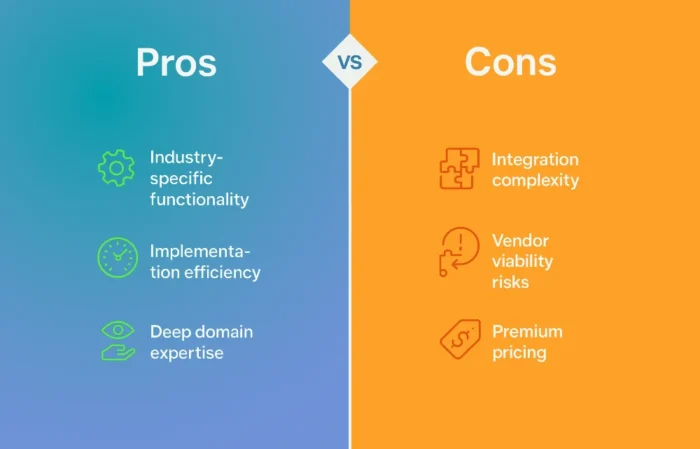
Benefits
Industry-specific functionality stands as a primary benefit of vertical SaaS platforms, with solutions designed explicitly for particular workflows. Unlike generic software that requires businesses to adapt their processes to fit the technology, vertical SaaS aligns with established industry practices, incorporating specialized terminology, compliance requirements, and operational nuances that resonate with professionals in the field. This alignment significantly reduces friction in adoption and maximizes productivity gains across the organization.
Implementation efficiency represents another major advantage of the vertical approach. Since these platforms come pre-configured with industry-specific features and workflows, organizations typically experience substantially faster deployment timeframes compared to horizontal solutions that require extensive customization. This acceleration of time-to-value can be particularly crucial for businesses in competitive sectors where operational agility creates market advantages and where lengthy implementation projects can drain resources.
Deep domain expertise completes the trifecta of vertical SaaS benefits, extending beyond mere software functionality. These vendors typically possess substantial knowledge of their target industries, enabling them to serve as strategic partners rather than mere technology suppliers. This expertise translates into more valuable product roadmaps, support services, and access to industry best practices that create competitive advantages for customers who might otherwise struggle to develop such specialized knowledge internally.
Challenges
Integration complexity often tops the list of vertical SaaS challenges, particularly for organizations with extensive technology ecosystems. While these solutions excel at industry-specific functions, connecting these platforms with broader enterprise systems can sometimes prove challenging, potentially creating information silos that undermine the benefits of specialization. Organizations must carefully plan their integration strategy to ensure vertical solutions complement rather than conflict with their broader technology landscape.
Vendor viability risks present another significant limitation for consideration. The vertical SaaS landscape includes many newer, venture-funded companies that may not have the financial stability of established horizontal SaaS providers. Organizations adopting these specialized solutions must carefully evaluate the long-term sustainability of their vendors, as switching costs tend to be higher with deeply integrated vertical platforms that become embedded in critical business processes.
Premium pricing rounds out the key challenges, particularly affecting smaller organizations. The specialized nature of vertical SaaS often commands higher subscription fees that reflect the deep industry knowledge embedded in these platforms. While the total cost of ownership may ultimately prove lower than extensively customized horizontal alternatives, the initial and ongoing subscription costs can create barriers to adoption for budget-constrained organizations that might benefit most from industry-specific functionality.
Businesses must thoughtfully weigh these benefits and challenges when considering vertical SaaS adoption. Many successful organizations address the limitations through careful vendor selection, robust integration strategies, and hybrid approaches that combine vertical solutions for core industry functions with horizontal platforms for more general business needs.

Examples of Vertical SaaS Markets
The vertical SaaS approach has really taken off across a wide range of industries. Let’s take a look at some key sector examples.
Financial Services / Fintech
In the financial services space, vertical SaaS has become a game-changer for managing complex regulations and specialized workflows. For example, platforms designed for core banking offer features like regulatory compliance, risk management, and processes specific to the financial sector. Similarly, investment management tools help wealth advisors and financial institutions with tasks like portfolio analysis and reporting, features that wouldn’t apply in other industries.
Healthcare
Healthcare faces unique challenges, from patient privacy to clinical workflows and billing complexities. Vertical SaaS solutions for healthcare provide electronic health records (EHR) and practice management systems tailored to the medical field, including HIPAA compliance and medical coding. There are also platforms built specifically for pharmaceutical companies, offering features to manage clinical trials and regulatory submissions, which are specialized tasks not relevant outside of the healthcare sector.
Manufacturing
In manufacturing, vertical SaaS platforms help optimize everything from production processes to supply chain management. These tools offer features that meet the needs of specific manufacturing sectors, including production tracking, quality management, and compliance with industry standards like ISO. The workflows and terminology are specialized, making them highly relevant for manufacturers but not applicable to other industries.
Real Estate / PropTech
When it comes to property management and real estate transactions, the need for specialized software is clear. Vertical SaaS solutions for real estate include property management tools designed for different types of properties, such as residential, commercial, and community associations. These platforms offer features like lease management, maintenance requests, and property-specific accounting. In commercial real estate, there are solutions designed to support the unique workflows of property owners and brokers, from leasing to asset management.
Logistics and Supply Chain
The logistics industry faces the challenge of coordinating complex global transportation networks, and vertical SaaS helps streamline these operations. Specialized supply chain management platforms include features for shipping documentation, customs compliance, and freight tracking. These solutions use industry-specific terminology and workflows that are crucial for logistics professionals but not meaningful in other fields.
These examples highlight how vertical SaaS can add real value by addressing the unique operational needs of different industries. By focusing on a specific vertical, these solutions provide deeper functionality and better alignment with industry-specific practices, which can’t always be achieved with more generalized software.
Vertical SaaS & Digital Transformation
Vertical SaaS has emerged as a critical enabler of digital transformation initiatives across industries, particularly for organizations seeking to modernize their core operations. Unlike general-purpose solutions, these industry-specific platforms accelerate transformation by embedding sector best practices directly into the software, dramatically shortening the path to modernization and reducing implementation risks.
Rather than reinventing the wheel or struggling to adapt generic solutions to specialized needs, businesses can implement proven approaches already built into these platforms.
The data capabilities of vertical solutions further enhance transformation efforts through industry-specific data models, metrics, and analytical frameworks that align precisely with how sector professionals think about their operations. This alignment enables truly data-driven decision-making tailored to unique business contexts, while supporting emerging business models such as telehealth delivery in healthcare, servitization approaches in manufacturing, and omni-channel strategies in retail.
Organizations can leverage purpose-built capabilities from vendors who deeply understand these industry-specific transitions rather than cobbling together generic solutions.
Today’s industries increasingly operate as interconnected ecosystems rather than collections of isolated organizations, making vertical SaaS particularly valuable for comprehensive transformation.
These specialized platforms frequently include capabilities for ecosystem participation, from industry-specific API connectivity to marketplace functionality tailored to particular sector networks. This enables organizations to transform not just internal operations but also how they connect with suppliers, partners, and customers in their broader business ecosystem.
Perhaps most importantly, vertical SaaS helps organizations overcome the legacy system challenges that often derail transformation initiatives. Many industries struggle with deeply entrenched legacy technologies that resist modernization, but vertical SaaS providers understand these constraints and design migration paths specifically for outdated technologies prevalent in their target sectors.
For companies undertaking digital transformation of their core industry operations, vertical SaaS represents a pragmatic middle ground between generic off-the-shelf solutions and fully custom development, delivering specialized functionality with the implementation speed, reliability, and ongoing innovation advantages of the SaaS model.
Future Outlook for Vertical SaaS Platforms
The vertical SaaS market continues to evolve rapidly, with several emerging trends shaping its future trajectory:
Industry Consolidation: As the vertical SaaS market matures, we’re likely to see increasing consolidation through mergers and acquisitions. Larger horizontal SaaS providers are acquiring vertical specialists to expand their offerings, while successful vertical platforms are broadening their capabilities through strategic acquisitions.
AI and Machine Learning Integration: Vertical SaaS providers are increasingly incorporating artificial intelligence and machine learning capabilities tailored to specific industry use cases. These technologies enable more predictive, automated workflows aligned with industry-specific needs.
Cross-Industry Expansion: Successful vertical SaaS providers are beginning to expand from their initial target industries into adjacent sectors, applying their specialized knowledge to related fields. This creates new growth opportunities while maintaining the advantages of vertical focus.
Embedded Fintech Capabilities: Many vertical SaaS platforms are incorporating industry-specific financial services directly into their offerings, enabling integrated payments, financing, and banking services tailored to particular sector needs.
Rise of Vertical PaaS: Beyond application-level functionality, some providers are developing Platform-as-a-Service offerings that enable industry-specific application development, creating more flexible vertical ecosystems.
Increased Focus on Mid-Market: While many vertical SaaS solutions initially targeted enterprise customers, we’re seeing growing focus on mid-market offerings that provide industry-specific capabilities at price points accessible to smaller organizations.
Deeper Ecosystem Integration: Vertical SaaS platforms are evolving from standalone applications into ecosystem orchestrators, with increasing emphasis on industry-specific marketplace functionality and third-party integration capabilities.
As these trends continue to shape the vertical SaaS landscape, organizations across industries will benefit from increasingly sophisticated, specialized solutions aligned with their unique operational requirements and business objectives.




